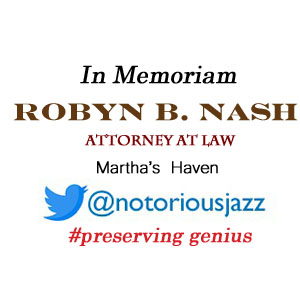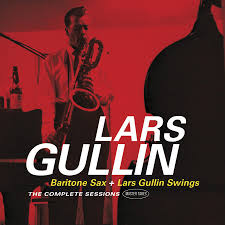
Daily Dose Of Jazz…
Lars Gunnar Victor Gullin was born May 4, 1928 in Visby, Sweden. A child prodigy on the accordion, by age thirteen, he played clarinet in a military band and later learned the alto saxophone. After moving to Stockholm, Sweden in 1947 he became a professional musician as a pianist. Planning on a classical career he studied privately with classical pianist Sven Brandel.
He filled the baritone chair in Seymour Österwall’s band in 1949 by chance, it was enough for him to decide that it was an instrument with possibilities. He was influenced by baritone saxophonist Gerry Mulligan for the first time on the Birth of the Cool recordings. He worked as a member of Arne Domnérus’s septet for two years from 1951.
Gullin began working with visiting American musicians, recording with James Moody, Zoot Sims and Clifford Brown. Most importantly, he first performed with Lee Konitz in 1951, an association which was to be repeated several times in future years.
In 1953 formed his own group, probably the only regular group he was to lead. It was short-lived, breaking up later that year after Lars was responsible for causing the group to be involved in an automobile accident, although no one was seriously hurt. The next year, 1954, he won the best newcomer award in the American DownBeat magazine. Later his albums were leased to Atlantic Records in the United States and toured several European countries with Chet Baker in 1955.
The remainder of his career was blighted by his own narcotics problems and sometimes he survived on artists’ grants from the Swedish government. During most of 1959 he was active in Italy, he played with Chet Baker again and with the jazz alto saxophonist Flavio Ambrosetti, making radio broadcasts with him in Lausanne, Switzerland.
He recorded with Archie Shepp in 1963. One of his last major statements was his Aeros aromatic atomica suite recorded in 1973. A recording jointly led by Lee Konitz and pianist Lars Sjösten, Dedicated to Lee … Play the Music of Lars Gullin was recorded in 1983 and issued by Dragon Records. Baritone saxophonist Lars Gullin transitioned from a heart attack on May 17, 1976, brought on by his long-term addiction to methadone.
More Posts: bandleader,clarinet,history,instrumental,jazz,music,piano,saxophone
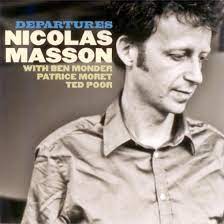
Daily Dose Of Jazz…
Nicolas Masson was born on April 14, 1972 in Geneva, Switzerland. He took up the saxophone in his youth and at twenty years old he met Cecil Taylor in New York and took lessons from Frank Lowe and Makanda Ken McIntyre. Returning home he enrolled in the jazz program at the Conservatoire Populaire de Musique de Genève with Maurice Magnoni as a saxophone teacher.
While a student he attended master classes withLee Konitz, Dave Douglas and Misha Mengelberg. In 1999 Masson spent the summer in New York City studying with Chris Potter. Graduating from the conservatoire in 2000 with a jazz performance and teaching degree, he returned to New York City for a year and studied regularly with Rich Perry and played with local musicians.
His debut album Awake was released in 2002 on the Swiss label Altri Suoni. The session was recorded with his New York band featuring trumpeter Russ Johnson, bassist Eivind Opsvik and drummer Mark Ferber. A year later they were touring Switzerland and Italy.
Receiving a grant from the Bourse d’Aide à la Création he was able to tour Italy and record his sophomore album Yellow (A Little Orange) that was released in 2006 on the Fresh Sound/New Talent label. In 2005 and 2006, the Quartet toured Italy again, taking part in an itinerant Swiss festival organized by Rome’s Swiss Cultural Centre, sharing the evening with Irène Schweizer, Lucas Niggli and Malcolm Braff.
In 2007, a New York concert, European duo tour with Kris Davis of Switzerland, Italy, France and Germany, a New York gig with the Quartet and a 2009 release Thirty Six Ghosts on Clean Feed Records kept him busy. Saxophonist Nicolas Masson continues to record and play throughout Europe.
More Posts: history,instrumental,jazz,music,saxophone
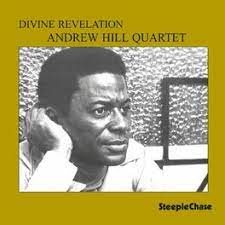
Daily Dose Of Jazz…
Jimmy Vass was born March 31, 1937, in Philadelphia, Pennsylvania and acquired his first saxophone at age 18. After honing his chops on the local club scene, he relocated to New York City in 1963, working a series of day jobs while moonlighting as a musician.
Vass first appeared on record in 1968 via Sunny Murray’s Hard Cores. With 1971’s Soul Story, he began an extended collaboration with the great soul-jazz organist Charles Earland. His most notable partnership paired him with avant-jazz pianist Andrew Hill, beginning with 1975’s Divine Revelation.
He played on Roberta Flack’s Feel Like Makin’ Love. He also lent his talents to recording sessions with Muhal Richard Abrams, Rashied Ali, Charles Mingus, Lionel Hampton, Ronnie Boykins and Woody Shaw. Never leading a recording date of his own, in the autumn of his career Jimmy worked as a music instructor and led his own New York-based group playing standards and originals.
Alto and soprano saxophonist and flutist Jimmy Vass, who emerged as one of the premier jazz sidemen of the 1970s, transitioned on September 21, 2006, at the age of 69.
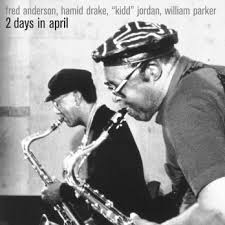
Daily Dose Of Jazz…
Fred Anderson was born in Monroe, Louisiana on March 22, 1929. When he was ten, his parents separated, and he moved to Evanston, Illinois, where he initially lived with his mother and aunt in a one-room apartment. When Anderson was a teenager, a friend introduced him to the music of Charlie Parker, and he soon decided he wanted to play saxophone, purchasing his first instrument for $45. He listened to Lester Young, Johnny Hodges, Dexter Gordon, Gene Ammons, and Illinois Jacquet, all of whom would influence his playing. He also heard Young and Parker in concert on multiple occasions.
Unlike many musicians at the time, Anderson did not play with dance bands or school ensembles, and instead focused on practicing, taking private lessons, and studying music theory at the Roy Knapp Conservatory in Chicago, Illinois all the while supporting his family by working as a waiter. He also began making an effort to develop a personal sound on his instrument, with the goal of combining Ammons’ big sound with Parker’s speed.
At around this time, he began to develop a series of exercises which he incorporated into his daily practice routine, and which eventually became a book titled Exercises for the Creative Musician.
In the early 1960s, Anderson began listening to and studying the music of Ornette Coleman, and immediately related Coleman’s playing to that of Charlie Parker. Influenced by Coleman, he formed a piano-less band with trumpeter Bill Brimfield, bassist Bill Fletcher, and drummer Vernon Thomas, playing a mixture of bebop standards and Anderson originals. During the decade he would go on to play weekly jam sessions, joined the AACM (Association for the Advancement of Creative Musicians) and remained in the States when many of his AACM colleagues left for Europe seeking better opportuities.
In the Seventies he formed the Fred Anderson Sextet, with trombonist George E. Lewis, reedist Douglas Ewart, bassist Felix Blackmon, drummer Hamid Drake, and vocalist Iqua Colson. By 1977 he and Brimfield visited Europe, where they recorded Accents with the Austrian trio Neighbours, then returned and opened a venue in Chicago that he named the Birdhouse, after Charlie Parker. Unfortunately, Anderson encountered resistance and harassment from officials and people in the neighborhood, who were suspicious of his motives, and he ended up closing the club a year later.
The following decade saw Fred taking over ownership of a bar in Chicago called the Velvet Lounge, and transformed it into a center for the city’s jazz and experimental music scenes, hosting Sunday jam sessions and numerous concerts. The club expanded and relocated in the summer of 2006.
Though he remained an active performer, Anderson rarely recorded for about a decade beginning in the early Eighties. In 1990, however, he received the first Jazz Masters Fellowship from Arts Midwest, and by the mid-1990s, he resumed a more active recording schedule, both as a solo artist, and in collaboration with younger performers. He would go on to perform as a soloist with 30 piece orchestras, mentor young musicians, and his Velvet Lounge has international fame.
Tenor saxophonist Fred Anderson, rooted in the swing, hard bop and free jazz idioms, who continued to record and tour throughout the 2000s and was scheduled to perform the day he died, transitioned on June 24, 2010.
More Posts: bandleader,history,instrumental,jazz,music,saxophone

Daily Dose Of Jazz…
James R. Coe was born in Tompkinsville, Kentucky on March 20, 1921 and moved to Indianapolis, Indiana with his family as a child. He first played in a band with Erroll “Groundhog” Grandy, who mentored J. J. Johnson and Wes Montgomery.
From 1938 to 1940, Coe performed with Buddy Bryant’s band and by the age of 20, was already touring with the Jay McShann band, which included Charlie Parker, Al Hibbler, Walter Brown, Bernard Anderson, Gene Ramey and Doc West.
In the 1950s Jimmy recorded for King Records as a member of Tiny Bradshaw’s band, then made a session with his own combo, though the company oddly insisted on billing him as Jimmy Cole. 1953 saw States recording his Gay Cats of Rhythm. By the late 1950s, he led the house band for the small Indianapolis-based label Note Records. Some of the material was licensed to Checker, which had better distribution.
Coe backed performers Wes Montgomery, Slide Hampton, David Baker, Freddie Hubbard, Carl Perkins, Larry Ridley, Leroy Vinnegar, as well as Aretha Franklin, Roy Hamilton, Gladys Knight & the Pips. and doo-wop performers, The Students.
Saxophonist Jimmy Coe transitioned in Indianapolis on February 26, 2004 at the age of 82.
More Posts: bandleader,history,instrumental,jazz,music,saxophone



